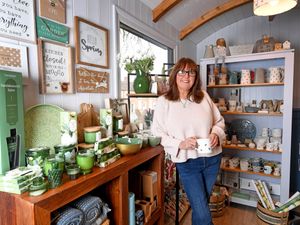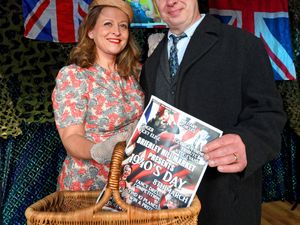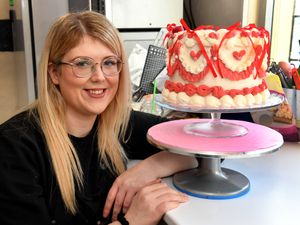A real iron man
When Robin Lumley was made redundant from the production line at Goodyear it gave him the chance to turn his childhood hobby into a career.

Now the architectural pattern-maker is helping to keep the craft alive and kicking in the Black Country.
His intricate, handmade work can be seen in towns and homes around the globe.
From his workshop in Wolverhampton, he designs and produces precision patterns for bespoke cast iron goods from letter boxes, door knockers and name signs to memorials and historical blue plaques.
“I love using my hands to make something that will last for a long time. A lot of pattern making is now done on machines. I don’t think there are many of us left now still doing it by hand,” explains 55-year-old Robin.
A pattern is an exact model of what is to be cast. Robin’s are made from wood with the intricate decorations carved out of wax or plasticine depending on the level of detail required.
“Wax is better when there is a lot of fine detail because plasticine is softer so it doesn’t show the detail as well,” he explains.
The amount of time it takes to carve out the detail varies depending on the type of design but a coat of arms, for example, can require two to three days of work.
A fret saw may be used when there is lettering to cut out.
The finished patterns are taken to a nearby foundry to be cast. A mould is made by packing sand tightly around the pattern which is held in a box.
Molten metal is then poured into the pattern and, when cool, the resulting piece of cast iron can be removed from the mould.
Robin will then paint the pieces and assemble the parts, if necessary, before they are shipped to their new owner.
He designs and sells a range of items through his website and can tailor his work to meet specific customer requests.
“Most people want something personalised whether it’s the name of a house or a coat of arms. I also reproduce historical items that may have been damaged or had bits broken off. I use photographs to make a replica,” he explains.
One of his popular pieces is a reproduction of a cast iron door knocker with a lion-like beast on which is associated with Durham Cathedral.
It is said that in medieval times, fugitives and criminals that rapped the knocker would be given 37 days sanctuary within which they could try to reconcile with their enemies or plan their escape. His replicas are even sold at the cathedral’s shop.
Robin is passionate about his work and says it all started when he was young with wood carving before he progressed on to architectural pattern-making.
“I started wood carving when I was 12 because it was something my dad Thomas did as a hobby. I enjoyed starting with a piece of wood and turning it into something else. It’s all been self-taught and I’ve picked it up as I’ve gone along,” he says.
When he was 26, he spent two months making a 2ft tall replica of a Ford Model T which won first prize at the Practical Wood Working Exhibition in Leeds.
He had won second prize at the show the previous year with a model Rolls-Royce.
While in 1998 he won first prize with a carved goblin in a national competition run by the British Woodcarving Association.
The father-of-one also made a huge Georgian-style dolls house for his wife Lannie but ended up being too big for their home.
The four-bedroom luxury home had an attic, staircase and landing and measured about 3ft long by 2ft high.
“When I lost my job, I decided to take the plunge and get my own unit. I’ve never looked back.
“I still do some wood carvings when people ask for them but it’s mostly pattern-making now.
“There is a lot of work involved from start to finish but it’s very rewarding when you have something in your hands which you have designed.
“It’s even better when people want to buy something you’ve made yourself,” says over the years.
Some of his handiwork can be seen in and around Wolverhampton such as a blue plaque celebrating the life of Catherine Eddowes, who was killed by Jack the Ripper.
Commissioned by Wolverhampton Civic and Historical Society, it is displayed at the Jubilee Christian Centre on Merridale Street which is near to her former Graiseley Green home.
“I actually made and sponsored that one because it was such an interesting one to be involved with,” he tells us.
Another pays tribute to industrialist and entrepreneur John Wilkinson and can be seen at Wilkinson Primary School in Bradley, which is on the site where his blast furnace once stood.
He also made a plaque celebrating Bridgnorth’s achievement winning the ‘best market town’ category of the Great British High Street Awards.
While more recently he produced the blue plaque to honour historic amateur football competition, the JW Hunt Cup, which has run every season since 1926/27 and has raised more than £320,000 for the Beacon Centre for the Blind. The tribute was unveiled at Molineux in July.
“Many people see these plaques and don’t know where they come from or who has made them. My name is on them but it’s always on the back.
“It’s nice to know that people are reading them and I like seeing them around too,” says Robin, who has a 29-year-old son named Luke and lives in Aldersley.
“I just love being creative and trying out different designs. It can be nerve-wracking at first when I’m trying something new but when it all works out, it makes it all worthwhile.”




